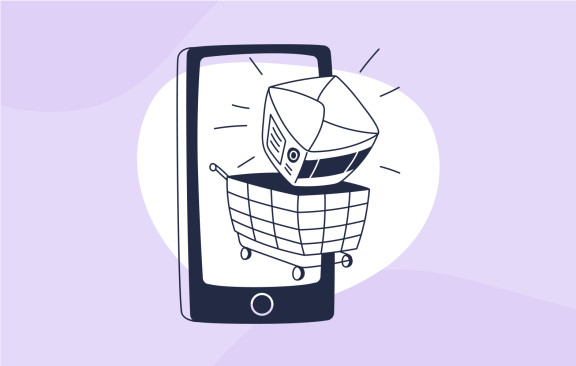💡 Key Insights:
- Comparison and Suitability: Understand the key differences between dropshipping and wholesaling, including which business types each model is best suited for, such as low-capital startups for dropshipping and established businesses for wholesaling.
- Decision-Making Tips: Evaluate your budget, product line, scalability goals, and branding needs to determine whether dropshipping or wholesaling aligns better with your eCommerce business strategy.
- Risk and Control Considerations: Dropshipping offers lower financial risk and easier scalability, while wholesaling provides higher profit margins and greater control over branding and customer experience.
When starting an eCommerce business, one of the first and most important decisions you'll make is choosing the right type of supplier. Should you go with dropshipping, where you can sell products without holding inventory, or should you opt for wholesaling, where you buy in bulk and manage your own stock? Both models have their own set of advantages and challenges, and understanding the differences is key to making the right choice for your business.
In this guide, we'll break down the key differences between dropshipping and wholesaling, help you understand which model suits different business types, and provide tips on how to choose the right supplier for your specific needs.
Quick Comparison: Dropshipping vs. Wholesaling
| Aspect |
Dropshipping |
Wholesaling |
|---|---|---|
| Inventory Management | No need to hold inventory | Requires purchasing and storing inventory |
| Upfront Costs | Low (you only pay when a customer orders) | High (you purchase in bulk upfront) |
| Shipping | Supplier ships directly to the customer | You handle shipping yourself |
| Profit Margins | Lower profit margins due to higher supplier costs | Higher profit margins but requires more management |
| Control over Branding | Limited, as you rely on the supplier's packaging | Full control over packaging and customer experience |
| Risk Level | Lower financial risk | Higher risk due to upfront investment |
| Best for | New businesses, side hustles, low-risk ventures | Established businesses, those with capital to invest |
What is Dropshipping?

Dropshipping is a fulfillment model that allows you to sell products without ever holding inventory. When a customer makes a purchase from your online store, the order is sent to a third-party supplier (the dropshipper), who then ships the product directly to the customer.
Advantages of Dropshipping:
- Low Upfront Costs: You only pay for products after you've made a sale.
- Wide Product Selection: Since you don't have to pre-purchase inventory, you can offer a wide variety of products.
- Reduced Risk: With no need to buy stock in advance, the financial risk is lower.
Challenges of Dropshipping:
- Lower Profit Margins: Since suppliers charge more per item, your margins can be slim.
- Less Control Over Branding: You have less influence over the packaging and presentation of the product.
- Potential for Supplier Issues: If your supplier fails to deliver on time, it can harm your reputation.
What is Wholesaling?

Wholesaling involves buying products in bulk directly from manufacturers or distributors at a lower price per unit. You then sell these products at a markup through your own eCommerce store, shipping them from your inventory.
Advantages of Wholesaling:
- Higher Profit Margins: Buying in bulk usually results in a lower cost per unit, allowing for higher profit margins.
- Full Control Over Branding: You control the entire customer experience, from packaging to shipping.
- Better Supplier Relationships: Purchasing in bulk often leads to stronger relationships with suppliers, which can result in better terms.
Challenges of Wholesaling:
- Higher Upfront Costs: You'll need to invest in inventory upfront, which requires capital.
- Inventory Management: You'll need to manage storage, inventory levels, and shipping logistics.
- Higher Risk: If products don't sell, you're stuck with unsold inventory, which ties up capital.
Who Should Use Dropshipping?
Dropshipping is ideal for new entrepreneurs or those who want to test the waters of eCommerce without a significant upfront investment. It’s also a great option for niche products where holding inventory might be impractical due to varying demand.
Best For:
- Side Hustles: Perfect for those looking to earn extra income without quitting their day job.
- Testing New Products: Ideal for testing the market response to new products without a large initial investment.
- Low-Capital Startups: Great for entrepreneurs with limited startup funds who want to minimize risk.
Who Should Use Wholesaling?
Wholesaling is more suited to established businesses that have the capital to invest in inventory and the resources to manage it. It’s an excellent model for businesses that want full control over their product offerings and branding.
Best For:
- Established Businesses: Ideal for businesses with a proven sales record and the ability to manage inventory.
- Brand-Centric Companies: Best for companies that want full control over their branding and customer experience.
- High-Margin Products: Perfect for businesses selling products with high demand and good profit margins.
Tips for Choosing the Right Type of Supplier for Your Business
Deciding between dropshipping and wholesaling depends on several factors, including your business model, budget, and long-term goals. Here are some tips to help you make the best choice:
1. Assess Your Budget:
- Dropshipping: Opt for this model if you have limited funds and prefer to minimize upfront costs. It allows you to start your business with minimal risk.
- Wholesaling: Choose this model if you have the capital to invest in bulk purchases and can afford to manage inventory.
2. Consider Your Product Line:
- Dropshipping: Ideal for businesses that want to offer a wide range of products without worrying about inventory management.
- Wholesaling: Best if you plan to focus on a specific product line with high demand, where control over inventory and branding is crucial.
3. Think About Scalability:
- Dropshipping: This model is highly scalable because you don’t have to worry about warehousing or shipping logistics. However, profit margins may remain thin as you scale.
- Wholesaling: While scaling a wholesale business requires more resources, it offers higher profit margins and better control over the supply chain.
4. Evaluate Your Risk Tolerance:
- Dropshipping: Opt for dropshipping if you prefer a low-risk venture with minimal financial commitment.
- Wholesaling: If you’re willing to take on more risk for the potential of higher profits, wholesaling might be the better choice.
5. Understand Your Branding Needs:
- Dropshipping: Suitable for businesses where branding isn’t the primary focus, as you have less control over the customer experience.
- Wholesaling: Ideal for businesses that want to create a strong brand presence and offer a personalized customer experience.
6. Test Your Market:
- Dropshipping: Use dropshipping to test new markets and product categories with minimal risk.
- Wholesaling: If you have confidence in your product and market, wholesaling allows for greater profit margins and brand control.
Making the Right Choice for Your Business
Choosing between dropshipping and wholesaling is a critical decision that can shape the future of your eCommerce business. Each model has its own set of advantages and challenges, and the best choice depends on your specific business needs, budget, and long-term goals.
By understanding the key differences between dropshipping and wholesaling, and by considering the tips provided, you can make an informed decision that aligns with your business strategy. Whether you choose the low-risk flexibility of dropshipping or the higher margins and control of wholesaling, both models offer unique opportunities to build a successful eCommerce business.










ausbargainbasement, yeah it's a bit of a nightmare when that happens and I've had my fair share of stressful times worrying about whether I will get negative feedback. If you can, buy a couple of your most popular drop shipped items and keep them on hand in case back orders occur. I've found this a huge help in the past.
Micheal, good plan to start using wholesalers when you can. It's a good idea to put some of your profits from drop shipping aside and save up to buy a wholesale lot when you can.
I think it's still worth drop shipping even when you are selling wholesale purchased items though. It gives you the chance to test out new products and also offer a wide product range.
I hope this helps :)